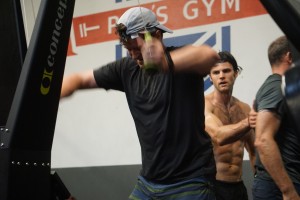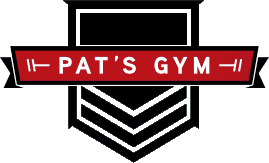 For the month of December, I will describe all the benefits of exercise. There are a lot of other benefits besides the obvious one. I also tend to get into the rationale behind the benefits, so I will share these with you.
For the month of December, I will describe all the benefits of exercise. There are a lot of other benefits besides the obvious one. I also tend to get into the rationale behind the benefits, so I will share these with you.
One of the strongest benefits of working out is helping improve your appearance and delay the aging process. However, from a physical standpoint, it reduces the risk of heart disease, cancer, high blood pressure, diabetes and other serious diseases.
However, working out really helps improve your stamina. Aerobic exercise trains your body to become more efficient and use less energy performing any physical activity. As your conditioning level improves, your heart rate and breathing rate return to resting levels much sooner from strenuous activity.
Resistance training and exercising with weights develops muscles and ligaments for increased strength and endurance. Your posture will most likely be improved and your muscles will get firmer and toned. This will not only make you look better, it will make you feel better too.
Exercise also helps with flexibility. Stretching exercises, which I incorporate into all of my athletes’ workouts, keeps the body limber so that you can bend, reach and twist. This will reduce the risk of injury and will improve balance and coordination. Stretching will avoid stiffness and will loosen up your muscles, which will make you feel more relaxed.
Exercise also burns calories, which will help you with weight control. If you burn off more calories than you take in, you lose weight.
Lastly, exercise will help you cope with stress in a very effective way. It also helps keep you in a great mood and helps with sleep.
So now I hope that I’ve convinced you to start working out regularly for a great 2018. But the question always arises, how often do I need to work out. Consistency with exercise is important to keep you engaged. You don’t want to be too aggressive in starting out because you will most likely stop. And a “start-stop” routine is not effective. Also, being too aggressive with your workout routine can lead to injuries. So, work with an experienced coach, and be wise.
Your routine should include cardio, light weights, and stretching. Start off slow if you’re a beginner. I generally start out my beginner athletes out with about 3 days per week of cardio. The length of a cardio workout will vary with the experience of the athlete. Also, the intensity is dictated by the health of the athlete. So, listen to your body, and let that be your guide.
Lifting weight is important to gain the maximum health benefits described above. Make sure you vary your exercises and don’t overwork any one body part. Let your body heal before you start training that body part again. Soreness is fine, but the pain is not.
And remember that stretching is part of it, as well as structural/recovery workouts. You want to remain limber, symmetrical, and avoid imbalances. Make sure you work with an experienced coach to help you avoid injuries. Stretching should be done every day, but you should do it no less than three times per week. When the body is warmed up, such as after a good workout, perform 5-10 stretches that target major muscle groups. Also, remember static stretches shouldn’t be done before a workout, but dynamic stretches can be done before a workout to warm you up.
So, set a realistic goal for 2018, and here’s to your health! Start now to get ready for that spring break trip, that summer vacation, or the race that you want to compete in during the summer or fall months. It’s never too early to get in shape!
